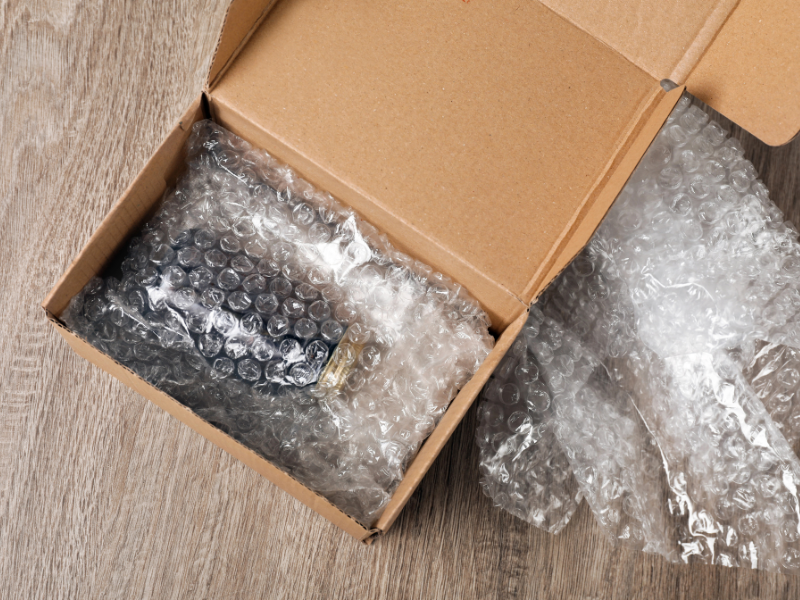Secondary and protective packaging is evolving as manufacturers, brand owners, and logistics providers recognise its value beyond simply offering product protection in transit to a role in operational efficiency and brand identity.
In this Q&A we discuss the secondary and protective packaging market with Keith Jacques, author of the Smithers report
The Future of Secondary and Protective Packaging to 2030, covering topics such as; key trends; technical innovations; impact of regulations; and areas of industry growth.
Read the conversation below:
1. What is Secondary and Protective packaging?
Secondary packaging’s primary function is to safely store and deliver multiple packages of a product. Protective packaging elements are designed to ensure that items arrive at their destination in the same condition as when they were packaged which can be done in either primary or secondary packaging.
However, the role of secondary packaging is evolving from simply fulfilling these functional roles to become more of a strategic asset across industries. It is no longer viewed by brand owners and distribution companies as simply a plain box in which to store and transport goods but is becoming more interactive, enabling packages to be tracked through the supply chain and enhancing the consumer unboxing experience where it is the first physical interaction with the product.
2. What are the key trends here?
The global packaging industry is under growing regulatory and consumer pressures to produce more sustainable products. The key trend, therefore, is to improve the environmental credentials of secondary and protective packaging while retaining its core protective function. Regionally, this drive to improve sustainability is seen most in Europe and it is significantly less in the US as there isn’t the same backlash on plastic use. In the rest of the world however, managing cost of handling and damage is the priority, and sustainability becomes low on the radar. This priority shift has made heavy gauge films the preferable material choice which are notoriously difficult to recycle.
Sustainability is becoming more important than protection in some low-cost areas like beverages. It is preferable to deal with the damage from transport than to protect the items with more packaging, which would increase both cost and volume of packaging, hence negative effects on packaging sustainability. In higher cost goods the drive is for protection and while some current forms do come from sustainable sources, evaluations are being made about disposal and end-of-life at present and a shift for more compostable packaging.
Two other drivers having an impact on the secondary and protective packaging market are automation, and smart packaging. Automation of packaging design, its production, and of filling and stacking operations are also contributing to sustainability of the packaging industry. Smart packaging technologies offer the prospect of monitoring the progress of packages through the supply chain and provide warning in real time of any changes in temperature or of physical impacts that could damage sensitive goods. The use of smart packaging is still at an early stage of development in terms of protective packaging.
3. What are the technical innovations expected in this sphere?
A priority of the packaging industry is to reduce the amount of single-use plastics used, leading the way for a transition from plastic-based bubble wrap, air pillows, and shrink and stretch wrap to paper-based alternatives wherever feasible. Biodegradable and/or compostable versions of these plastic materials are also being developed based on biopolymers or on natural materials such as starches.
Further innovations in automation using technologies such as AI and robotics will result in more flexible and adaptable packaging lines that can make the transition between shorter runs of different packaging with the minimum downtime. The design of secondary packaging will be further optimised at the same time so that it can be most effectively filled and stacked on these new automated lines. Innovations such as printed electronics will lead to lower costs for smart packaging sensors, opening up a wider range of packaging options where they can be used.
4. What is the impact of regulations on this market?
Regulations such as the EU Packaging and Packaging Waste Regulation and Extended Producer Responsibility schemes aim to increase the rates of recycling packaging waste materials and reduce the amount of packaging waste that goes to landfill or pollutes the environment. These regulations are supported by increased consumer pressure on brands and their packaging suppliers, even in countries where regulations are fragmented or non-existent. These regulatory and consumer pressures are pushing the packaging industry to reduce the quantities of materials used in all packaging, including secondary and protective, and to switch to environment-friendly and easy-recycled materials leading to a lack of harder-to-recycle materials like plastic films.
5. What area is growing the most in this industry?
e-Commerce is the fastest growing sector for secondary and protective packaging in all parts of the world with demand for secondary and protective packaging increasing rapidly. The sector is also at the forefront of innovation in sustainable packaging, with the leading online retailers committed to removing most of the single-use plastic materials in favour of those that can be easily recycled in domestic waste streams.
With the ability to order items directly from platforms like Deliveroo and Uber Eats, packaging need in e-commerce is developing to be able to get to consumers quickly with in-tact but minimally packaged products, balancing protection, sustainability expectations and unboxing experience.
This kind of direct-to-consumer packaging is rapidly growing in Asia, in particular India and China
6. What area is struggling in this market?
Protective packaging elements based on flexible plastic films are losing market share, particularly air pillows and shrink and stretch wrap films. While there are some schemes for in-store takeback of flexibles, the large drive for sustainable packaging and shifts to paper - particularly in e-commerce - are decreasing flexible use.
